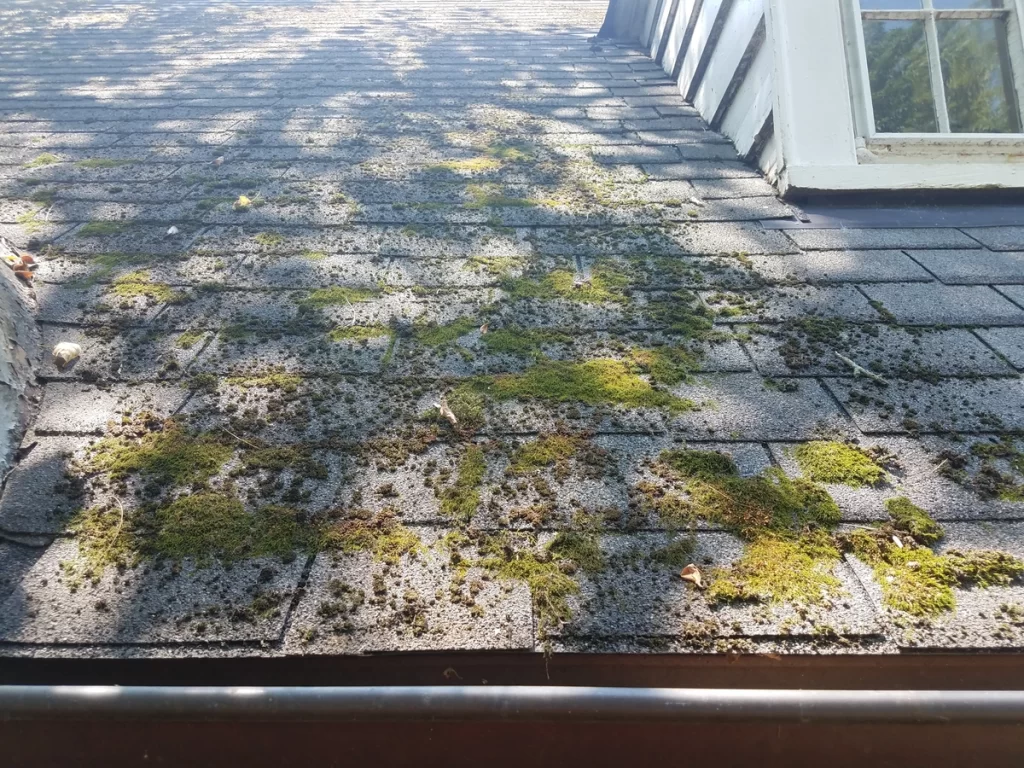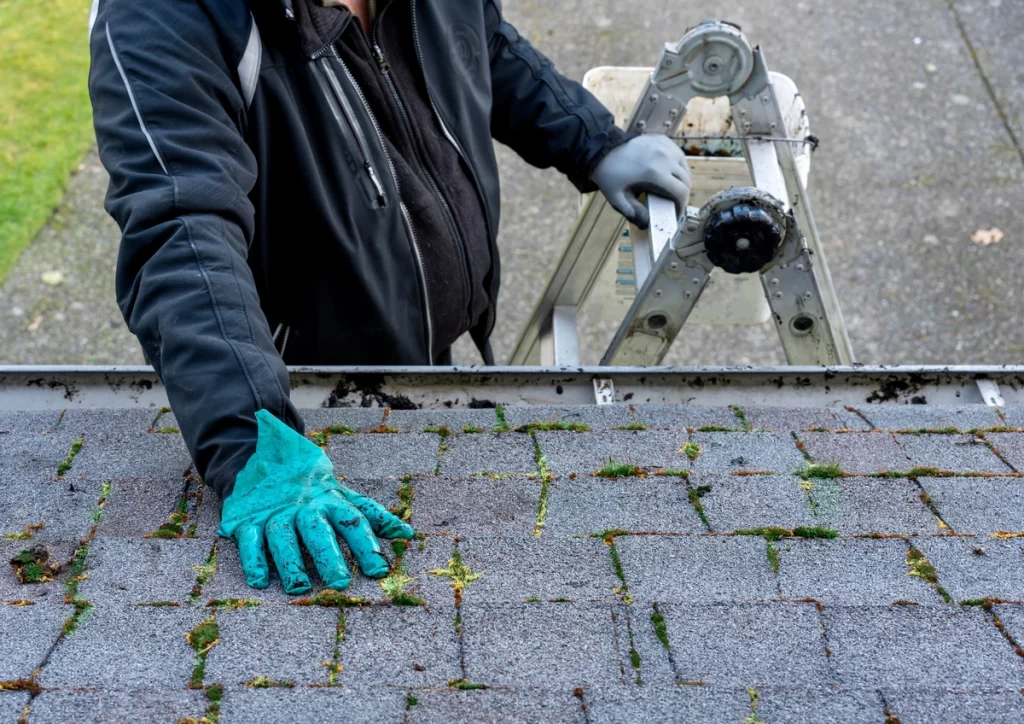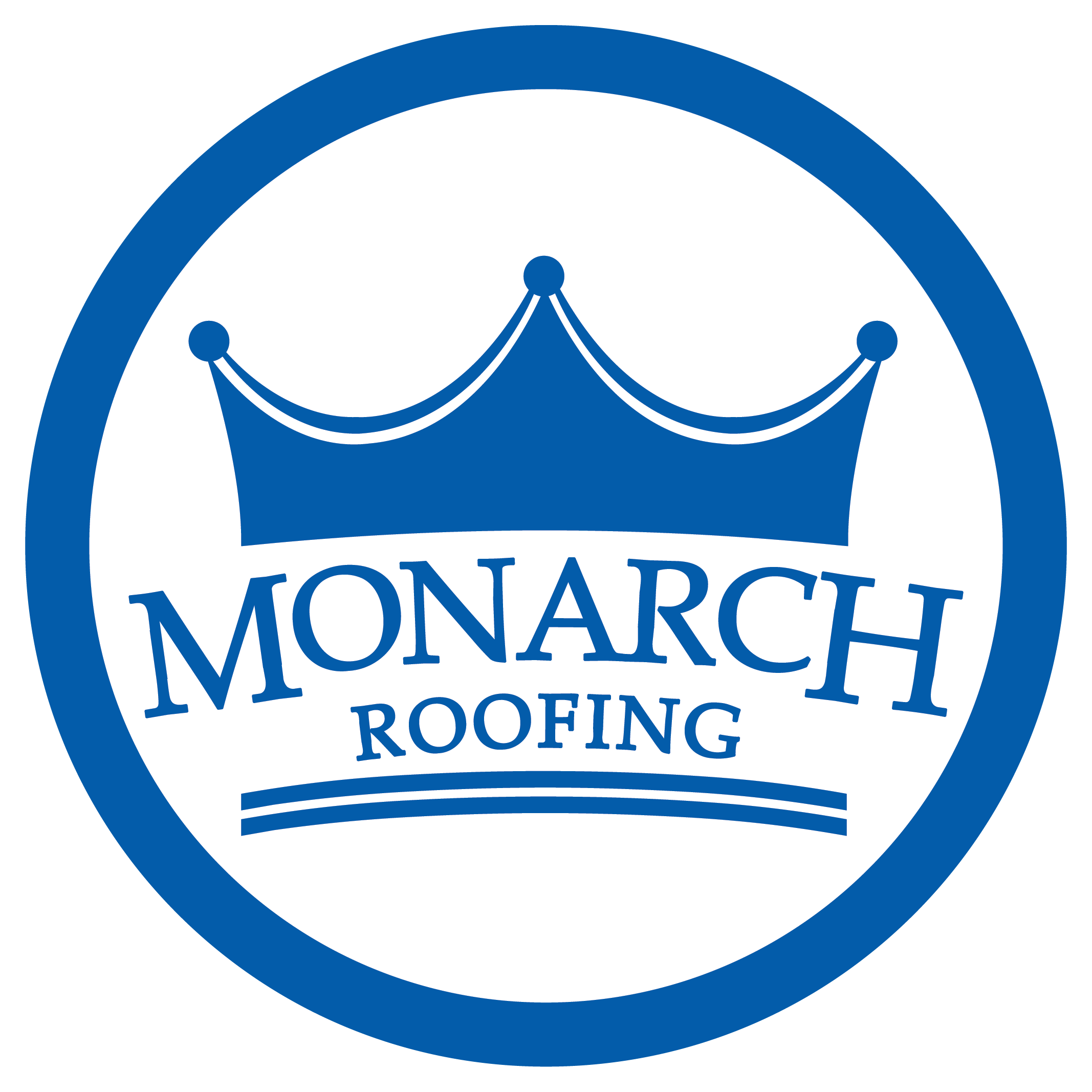Your roof, though often overlooked, plays a critical role in protecting your home from the elements. However, one common nuisance that can compromise its integrity is moss growth. Moss not only detracts from the aesthetic appeal of your roof but can also lead to significant damage if left unchecked.
In today’s comprehensive guide, we’ll delve into:
- The reasons behind moss growth
- Its detrimental effects
- Effective prevention methods
- Signs indicating the need for roof replacement
- The importance of consulting with a contractor
Stop searching “how to stop moss growing on roof” and start learning the facts you need!
Understanding Moss Growth on Your Roof

Moss is a non-vascular plant that thrives in damp and shaded environments. Therefore, it’s no surprise that roofs, especially those in humid and shaded areas, provide an ideal habitat for moss to flourish. Additionally, organic debris such as leaves and twigs can accumulate on your roof, providing nutrients for moss to grow.
Why Moss Growth is Detrimental
While moss may seem harmless at first glance, its presence on your roof can lead to various problems:
- Moisture Retention: Moss retains moisture, which can seep into the underlying roofing materials, causing them to degrade over time. This moisture retention can also contribute to the growth of algae and mold.
- Damage to Shingles: As moss spreads across your roof, its root-like structures can penetrate and lift shingles, compromising their integrity and leading to leaks.
- Reduced Lifespan of Roof: The presence of moss accelerates the deterioration of roofing materials, ultimately shortening the lifespan of your roof and necessitating premature replacement.
How to Stop Moss Growth on Your Roof: 5 Tips
Preventing moss growth on your roof requires a proactive approach. Here are some effective strategies:
1) Regular Maintenance
Keep your roof clean by removing debris such as leaves, branches, and pine needles. Use a roof rake or hire professionals for thorough cleaning, especially in areas prone to moss growth.
2) Trim Overhanging Branches
Trim branches that hang over your roof to minimize shade and allow more sunlight to reach the surface, inhibiting moss growth.
3) Improve Roof Ventilation
Ensure proper attic ventilation to reduce humidity levels on your roof. Proper ventilation promotes airflow, drying out moisture and creating an inhospitable environment for moss.
4) Zinc or Copper Strips
Install zinc or copper strips along the ridge of your roof. When it rains, these metals release ions that inhibit moss growth without causing harm to the environment.
5) Chemical Treatments
Apply moss-killing chemicals or eco-friendly solutions to your roof as a preventive measure. However, exercise caution and follow manufacturer instructions to avoid damage to roofing materials and surrounding vegetation.
Signs You Should Replace Your Roof
Despite your best efforts to prevent moss growth, there may come a time when roof replacement becomes inevitable. Here are some signs to watch out for:
- Age of Roof: If your roof is nearing the end of its expected lifespan (typically 20-30 years for asphalt shingles), it may be time to consider replacement, especially if moss growth is prevalent.
- Multiple Leaks: Persistent leaks, despite repairs, indicate widespread damage to the roofing system and may necessitate a full replacement.
- Sagging Roof Deck: A sagging or uneven roof deck is a clear indication of structural issues that warrant immediate attention and possibly roof replacement.
- Excessive Moss Growth: If moss growth is extensive and recurring despite preventive measures, it could signal underlying issues with the roof’s integrity, necessitating replacement to prevent further damage.
- Granule Loss: Asphalt shingles losing granules indicate wear and tear, compromising their ability to protect your home from the elements. If granule loss is widespread, replacement may be necessary to maintain the roof’s effectiveness.
Why You Should Consult with a Contractor
When it comes to roof maintenance, repair, or replacement, consulting with a qualified contractor is crucial. Here’s why:
🧠 Expertise and Experience:
Roofing contractors possess the knowledge, skills, and experience necessary to assess the condition of your roof accurately and recommend appropriate solutions.
🦺 Safety:
Roof work can be hazardous, especially for those without proper training and equipment. Contractors are trained in safety protocols and have the necessary tools to perform the job safely.
👍 Quality Workmanship:
Professional contractors adhere to industry best practices and use high-quality materials, ensuring that the work is done to a high standard and will withstand the test of time.
💵 Cost-Effective Solutions:
Contractors can help you choose cost-effective solutions tailored to your budget and needs, whether it’s repairs, maintenance, or roof replacement.
🧰 Warranty Coverage:
Many contractors offer warranties on their workmanship and the materials used, providing you with peace of mind and protection against unforeseen issues.
Professional Moss Removal for Your Roof

Preventing moss growth on your roof is essential for maintaining its structural integrity and prolonging its lifespan. By understanding the reasons behind moss growth, implementing preventive measures, recognizing signs of roof deterioration, and seeking professional guidance when needed, you can ensure that your roof remains in optimal condition, protecting your home for years to come. Remember, a little proactive maintenance today can save you from costly repairs tomorrow.
Are you looking to remove moss and maintain the integrity of your roof shingles? Monarch Roofing can help! Contact us today to get help removing moss from a roof.





